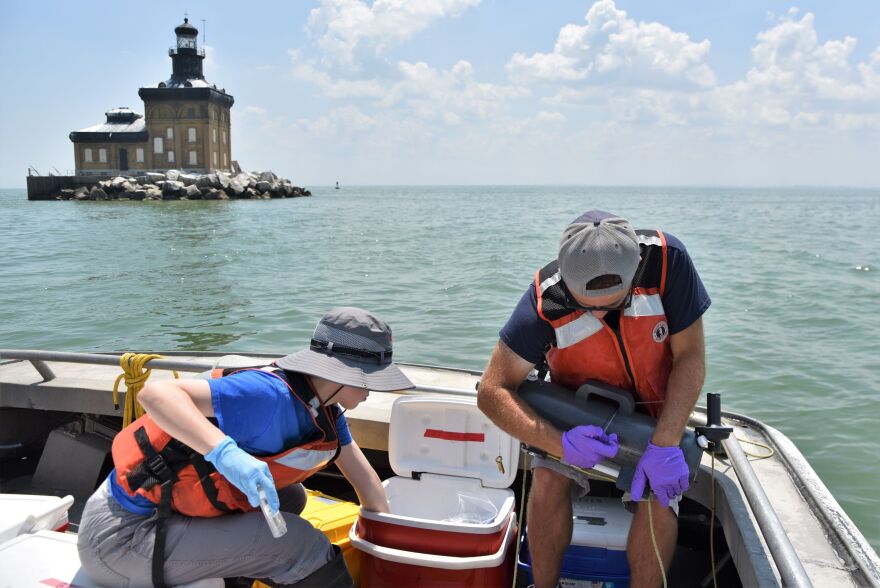By the end of the month, the U.S. Environmental Protection Agency (EPA) is expected to decide whether to approve an Ohio plan to reduce phosphorus pollution that feeds cyanobacteria in Lake Erie. Cyanobacterial blooms have become much larger in the last 30 years. The blooms can release toxins that cause neurological damage and liver damage to fish, dogs, and people. Some dogs have died.
Under a consent decree, Ohio has to come up with a plan to reduce the phosphorus feeding the blooms. The agreed reduction should reduce phosphorus by 40%.
Phosphorus gets into Lake Erie when it’s washed off farm fields and then down rivers such as the Maumee in Ohio, the Huron, Rouge, and River Raisin in Michigan. It enters Lake Erie as particles suspended in the water and as dissolved phosphorus.

There is research showing dissolved phosphorus is more readily taken up by cyanobacteria, making it a more significant source of nutrients feeding the larger blooms.
The Ohio Department of Natural Resources does not specifically target dissolved reactive phosphorus.
In an opinion piece published by Cleveland.com, a former Director of the Ohio Sea Grant, Jeff Reutter, wrote that the Ohio plan is “doomed to fail” because its approach of reducing total phosphorus would mean only a slight reduction in dissolved phosphorus.
He blames confined animal feeding operations (CAFOs) which grow thousands of heads of cattle or hogs, producing massive amounts of manure rich in phosphorus, as a major source of the problem.
Some environmentalists say the only way to reduce the phosphorus load is to stop allowing CAFOs and the manure they produce.
Chris Winslow is the current Director of the Ohio Sea Grant. He disagreed. He said research shows that CAFOs are only a part of the problem.
“The increase (in cyanobacterial blooms) that we saw started happening in in the mid-90s, that does not correspond or correlate with the increase in these CAFOs. I'm not saying that the animal operations and manure isn't something that we need to watch. I always say phosphorus is phosphorus is phosphorus,” he said.
He said the acreage of land where manure is spread is relatively small compared to the much wider use of commercial phosphorus that’s routinely used on most farmland.
He said there are basically five sources of phosphorus.
“That stuff that's already in the soils, what we call old phosphorus, or it's going to be commercially applied phosphorous. Those are the largest sources of our runoff and then point sources: so, pipes that deliver phosphorus, usually from wastewater treatment plants, septic, and manure are going to be the more minor players,” he said.
Without cooperation from farmers in better monitoring inputs, growing grassy buffer strips between farm fields and waterways and other practices to keep phosphorus, nitrogen, and other fertilizers out of the rivers, Lake Erie will continue to see large toxic cyanobacterial blooms.
Environmental groups are urging people to send notes to the EPA, asking the agency to reject the Ohio plan. The Lake Erie Waterkeeper group is circulating a petition also calling on the EPA to reject the plan.
Jeff Reutter wants the EPA to either tell the state to revise the plan, or the EPA should come up with a stronger plan of its own that can fix the problem of widespread toxic cyanobacterial blooms once and for all, according to his column.







